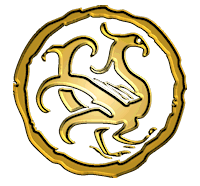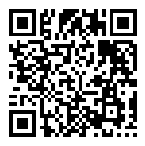Chinasage : All about China
China sage's information will be of use to anyone keen to learn more about the world's upcoming nation. We cover all aspects of China in hundreds of detailed pages which include all sorts of cultural traditions , descriptions of every Chinese province and all the dynasties . We hope you find ChinaSage the home for your study of China.
You can also check out your knowledge of China with our Quiz section .
Traditions
About Chinasage
We're building an extensive set of information all about China. We found other sites too detailed (such as Wikipedia) or just too old-fashioned. What we thought was needed was a carefully constructed site with strict editorial control so that everything is consistent and easy to navigate without clutter.
The name “Chinasage” came about because it can be read as either “China sage” (中 国 英 明 zhōng guó yīng míng ) or “China’s age” (中 国 时 代 zhōng guó shí dài ) , which promotes our new knowledge resource at a time when China has come of age in the world.
All the tea in China
Tea was the most important export that was weighed in the traditional Chinese unit of measurement called a 'catty'. It is known colloquially as the Chinese pound and is about 1.1pounds. In China it is known as the jin 斤 the word catty probably came from the Malay word. The modern weight is aligned to the metric system as exactly 500grams. The container for tea, a 'caddy', is believed to have been named after the measure.
Getting by in China There are many customs and traditions that you should know before traveling to China. Our customs page covers such things as giving gifts, banquets, sealing business deals and how to behave in public. A respect for age old traditions will impress your hosts who will appreciate your efforts to embrace the culture. Read more…
All about the religions of China Untangling the religions of China is quite a challenge. There are three main belief systems (principally: Confucianism, Daoism and Buddhism) that have co-existed in harmony for a very long time. Islam, Christianity and Ancestor veneration are also described in our comprehensive guide. Read more…
Lotus The lotus is an emblem with strong Buddhist links. As the plant grows in mud and muck and yet produces a pure white flower it is considered a metaphor for favorable transformation. Read more…
Book of Changes - Deciphered
The Yi Jing is the premier ancient classic in China, and yet at the heart of this very strange but important book is a mystery that has remained unsolved for 3,000 years. The ‘Book of Changes - Deciphered’ describes the history and importance of the Yi Jing (I Ching) and proposes a new solution to the ancient mystery. Buying a copy will help support Chinasage . Now also available in Kindle eBook format for just $5.99.
Details... ➚
Fish for good fortune Fish (渔 余 yú means 'surplus; abundance' and so a picture of a fish is a wish for prosperity. They are often eaten at Chinese New Year partly as a symbol for a wish for abundance in the coming year. Read more…
Consult the Yi Jing We offer a free consultation for Yi Jing (I Ching) the Chinese system for fortune telling. It uses the ancient yarrow stick method and gives full information about the 'gua' (hexagram) that is chosen. The consultation takes account of user action - it is not random. Read more…
Tai Chi and Martial Arts When people think of China many will picture martial arts as these have been portrayed so widely in films and on TV. The various techniques were developed in the monasteries where active exercise was the perfect balance to long spells of meditation. Many ordinary Chinese practice Taichi each day to boost health and suppleness. Read more…
How to write Chinese characters Many Chinese spend a great deal of time studying calligraphy. To be able to write (or more accurately paint) Chinese characters requires lots of practice as well as knowing both the brush strokes and the order in which to make them. Read more…
Cracking China book
Your A-Z key to understanding China
We are proud to announce a printed book all about China based loosely on this web site. It is a set of sixty topics in A-Z order covering everything from hair to kiwifruit, clapping to rhubarb, eunuchs to dragons. Buying a copy will help support Chinasage . Now available as a Kindle eBook for just $3.90.
Details... ➚
Lucky Bats Bats are commonly used in handicrafts, paintings and artwork to give a wish for good luck. This is because 'bat' and 'good luck' sound the same in Chinese. Read more…
History
Dip into history Our history section has a page for each major dynasty, for the whole period from the time of myths and legends 5,000 years ago all the way through the Han, Tang, Song, Ming dynasties to the last great dynasty the Qing. Read more…
The early history of China from pre-history to 770BCE Most of the ancient traditions of China had become established 3,000 years ago. The institution of Emperor, the written scripts and the key technologies (including silk) all come from China's distant past. The longevity and continuity of Chinese culture are the two key principles to understanding China - even today. Read more…
Song dynasty The Song dynasty is a period of Chinese refinement and peace rather than military prowess. Great strides were taken in the creative arts and literature. Prosperity from the growing trade by sea rather than overland fueled the building of huge cities. The eventual conquest by the Mongol hordes brought the dynasty to a tragic close. Read more…
China's only female ruler Empress Wu Zetian of the early Tang The shrewd and ambitious Empress Wu Zetian [624-705] came to rule China soon after the Tang dynasty had begun. Her legacy is still debated by some historians but it seems the brutality with which she is admonished was quite normal for the time period. For over 40 years she directed China's policies firstly as the Emperor Gaozong's wife and then in her own right. She championed the adoption of Buddhism in China and equal rights for women. Read more…
Superpower China An in-depth overview of the position of China in the world and its likely future. Is China on track to become the leading world super-power as it once was? For thousands of years China was by any measure the top nation on Earth, and so it seems natural that after 150 years of turmoil China will become the leading country again. We speculate on what this might mean to China and the rest of the world. Read more…
4th May 1919 The Chinese reaction to the Versailles Treaty was the major turning point in modern Chinese history. Widespread student protests throughout the country led to a change in government policy and a refusal to sign the treaty. It was a nationalist movement calling for solidarity against foreign exploitation that was eventually to lead to a militarized Guomindang as well as the foundation of the Chinese Communist Party. Read more…
Best China Sights In this page we give information on the top attractions all over China to tempt you to explore further. Each attraction is clearly marked on a map and further information on each place is readily available. From furthest Heilongjiang to Hong Kong and Lhasa to Shanghai we have selected the top travel highlights. Read more…
Geography
China's diverse geography China has deserts, mountains, lakes, rain forests and almost every other type of geographical feature you can think of. Our geography section has pages for each individual province as well as the great Yangzi and Yellow rivers. There are also pages on climate, cities, population, ethnic people, airports and universities. Read more…
The South China Sea China lays claim to a vast area of sea as far south as northern Borneo. The sea contains two groups of islands: the Paracels and the Spratleys. China's claim is disputed by all the neighboring countries surrounding the South China Sea. The U.S. navy continues to provocatively sailed through the region and plans further naval maneuvers. Read more…
Yangzi River The mighty Yangzi River is the longest in China and third longest in the world. It has carried huge quantities of people and goods over the centuries. Many great cities lie close to its banks: Chongqing, Wuhan, Nanjing and Shanghai. Read more…
The Hidden Kingdom Protected by mountains on three sides and the Yangzi river on the other, Sichuan has the feel of an isolated kingdom. Historically Chinese culture has held out longest here when China came under attack. It has hot, moist summers and has been heavily populated for two thousand years. Read more…
Delicious Chinese food A fine Chinese meal is a carefully balanced mixtures of flavors, textures, colors and food types. Although Western fast food has made major inroads in the cities there is still a great appreciation of Chinese food as one of the finer pleasures in life. Etiquette at formal banquets is important for visitors to understand before visiting China. Each region in China has its own variations with local specialities, the cuisine in southerly Guangdong is very different from that of northerly Gansu. Read more…
The Chinese Emperor The institution of Emperor , as head of the Chinese family of people, lasted for thousands of years and to some extent lives on with the Presidency. In China there has been great respect for the Emperor/President who in turn is expected to rule wisely with the best interests of his subjects in mind. To early European visitors to China the structure was considered close to the ideal form of society. Read more…
Language
The Chinese Language The Chinese language is rightly treasured as the country's greatest accomplishment. Our language section describes the language and its history. The section includes some introductory lessons and a guide to writing the characters. Read more…
Ancient stone writings Stone steles form the most permanent of records. Over the centuries they have been used as memorials, reference libraries, calligraphy samples and poems. Visitors to China will have seen these revered inscriptions in all sorts of locations: mountains, houses, parks and museums documenting the lives and feelings of people over the centuries. They are a powerful and permanent expression of the continuity of Chinese history. Read more…
1,000 character language primer One of the most loathed books in human history must be the Thousand Character Classic. For 1,500 years schoolchildren had to learn the whole set of 1,000 characters by rote. It was more about calligraphy practice rather than for making conversation. It remains a fact that learning a couple of thousand characters is a challenge to even young minds. Read more…
Good fortune You will often see the character for good fortune 褔 fú on decorations and gifts. 'Fu' is also associated with bats and oranges and this has a surprising explanation... Read more…
All Chinese Festivals Our extensive section on Chinese festivals gives the dates and backgrounds on over 30 of them. Our festivals page has full details of the origin and observance of each of them as well as a handy diary for when they will next fall. Essential when planning a trip to China. Read more…
Han Dynasty After the trauma of the Qin dynasty it was the succeeding Han dynasty that established China as a stable nation. Many Imperial institutions inaugurated at this time lasted for the next two thousand years. Together with the Tang and Ming it is considered one of the great periods of Chinese history. Read more…
Bits and Pieces
We need your help to keep the Chinasage web site growing. We'd love to keep this web site completely free of advertisements like Wikipedia. Please consider becoming a Patreon subscriber for however little or much you can afford. We have been running this campaign for two months and have so far raised only 10% of our target. So please help… or else advertisements will make a comeback!
To read more and take out a subscription simply click on the Patreon Patreon
Many thanks, much appreciated.
Tue 20th Sep 2022Patreon pictures Thanks to the generous donations from Chinasage's Patreon ➚ sponsors we've just added quality photographs to many of our pages.
Although you can get images of all sorts of thing for free you do still have to pay for quality, particularly for specialist subjects. This time we have used 123rf for the new images who claim to have 200 million images to choose from. It takes a long time to make a choice and then they all need editing for usage, tagging and finally putting on the appropriate place on our hundreds of pages. We hope you will agree that they make a significant improvement.
New Year dragon, Shanghai Read more…
All the tea in China
Tea was the most important export that was weighed in the traditional Chinese unit of measurement called a 'catty'. It is known colloquially as the Chinese pound and is about 1.1pounds. In China it is known as the jin 斤 the word catty probably came from the Malay word. The modern weight is aligned to the metric system as exactly 500grams. The container for tea, a 'caddy', is believed to have been named after the measure.
Cantonese Language The Cantonese language or 'Yue' language is still spoken by over 50 million people in Southern China (Guangdong, Guangxi, Hong Kong and Macau ). Although the written form is very similar to Mandarin the spoken language is very different. Read more…
Philippines and China The Philippines represent the most distant of China's neighbors across the South China Sea . Extensive trade over the centuries and the Spanish and then US occupation has its legacy in relations with mainland China. Read more…
Chinese numbers Learning the numbers in Chinese is easier than in many other languages. In our complete guide to the numbers we include the traditions associated them. For example, do you know why 4 is unlucky but 8 lucky? Read more…
Chinese Poetry The Chinese language is ideally suited for writing poems. The long history of Chinese has allowed poems written over two thousand years ago to still be appreciated today. The characters provide a concise method for conveying impressions and emotion. Read more…
The beach at Sanya, Hainan island
Conventions
We use a consistent style for links within Chinasage. An internal link taking you to another page within our site is shown like this while a link to a page on any other web site is shown like this ➚ .
We use Chinese characters wherever appropriate. Most browsers should display both the characters and the pinyin correctly. We highlight any use of the older Wade Giles system for 'spelling' characters. Except where stated all characters are the modern simplified form used in the People's Republic rather than the traditional ones (pre-1970s). To help you learn Chinese characters many of the very common characters are highlighted thus: 中
Dates are given using the BCE/CE ➚ (Before Common Era and in Common Era) year convention rather than BC/AD. If a date is not followed by BCE or CE it should be taken as CE.
Authorship
All the text on the Chinasage web site is my own, I do not copy and paste from other web sites. I research each topic from a number of authoritative sources (mainly books ). The only exception to this are quotations and image credits. All text is our copyright and can not be used/copied without my permission. I am independent of any other company or government, the opinions expressed are my own. I do not receive funding or backing from any agency or organization .
Teacup Media (China History Podcast)
I am delighted to be able to promote links to Laszlo Montgomery's excellent Teacup Media ➚ series created over the last 14 years. Laszlo Montgomery ➚ has in depth knowledge of building commercial contacts with China over 30 years. The set of 290 podcasts totals 150 hours of audio commentary which covers every conceivable topic in Chinese history. Highly recommended.
Acknowledgments
I am extremely grateful to the many people who have put their photographs online for anyone to adapt and use. Without them this site would be very drab. If I am not using the image license correctly please let me know. I am grateful to Kim Dramer ➚ for permission to use her short videos all about Chinese culture and traditions. Patreon subscribers have supported the web site and allowed us to amongst other things purchase some quality images of China for use here. Some pages use Javascript ➚ to create special effects such as our airport table and calendar . I am grateful to the original authors for providing their code to be used and adapted by anyone else. The online Chinese dictionary uses the definition from the CC-CEDICT project ➚ for which I am grateful for a generous free license. Sound files kindly provided by shtooka.net ➚ under a Creative Commons Attribution Share Alike License.
Feel free to contact Chinasage to point out any errors, omissions or suggestions on how to improve this web site.
If you would like to support my work and keep us independent become a Patreon or make a Donation via Paypal.


